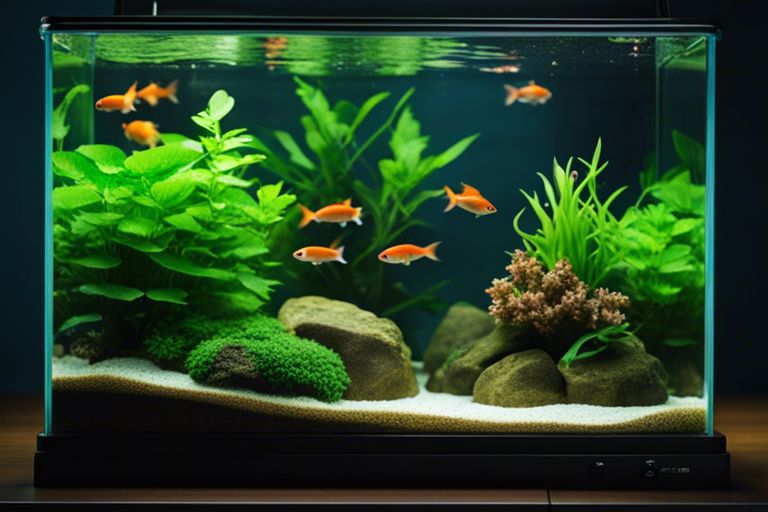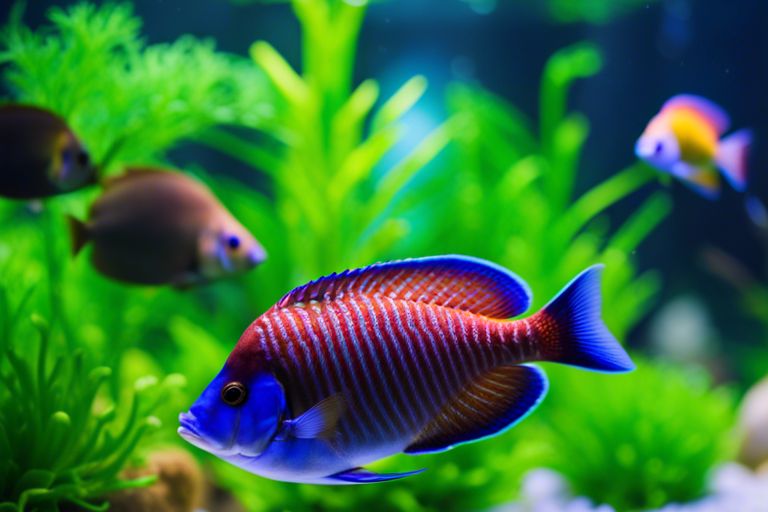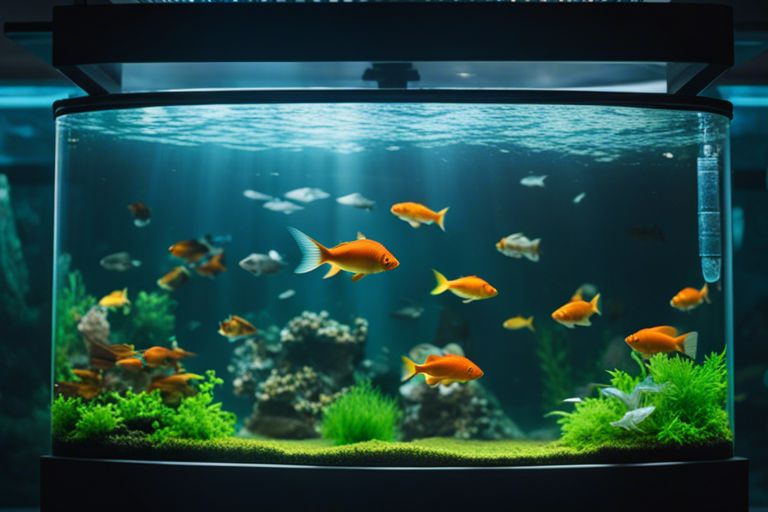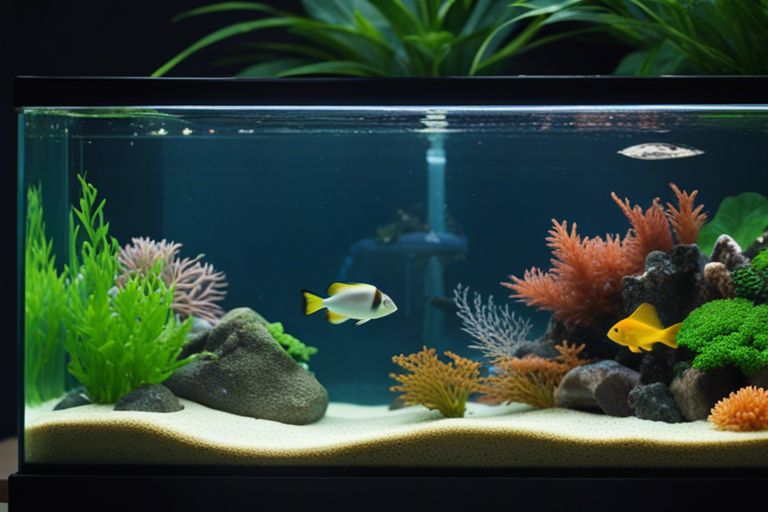You already know that keeping your aquatic pets happy and healthy requires more than just feeding them regularly. Ensuring that the water in your aquarium is in top condition is crucial for the overall well-being of your fish and other aquatic creatures. From monitoring pH levels to controlling ammonia and nitrate concentrations, maintaining optimal water parameters is key to creating a thriving aquatic environment. In this blog post, we will discuss the imperative water parameters you need to monitor and provide tips on how to keep them in check to ensure a healthy aquarium ecosystem.
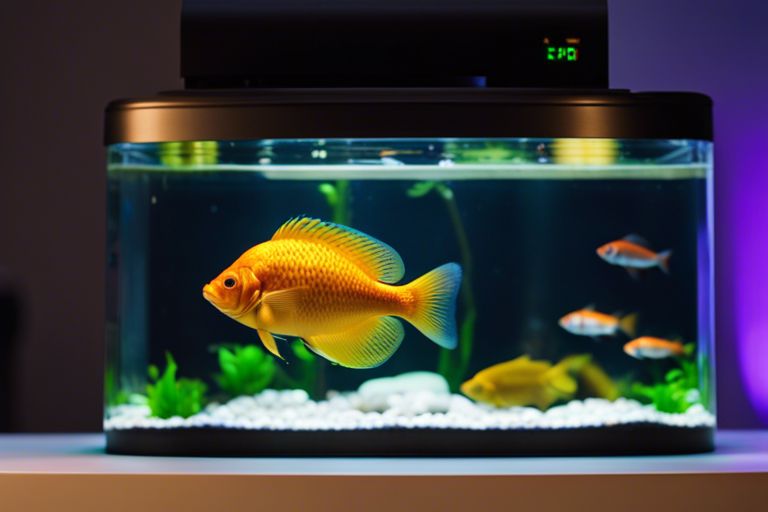
Understanding Water Chemistry in Aquariums
The Role of pH Levels
An imperative factor to consider in maintaining a healthy aquarium is monitoring pH levels. pH measures the acidity or alkalinity of the water on a scale from 0 to 14, with 7 being neutral. Most fish species thrive in a pH range of 6.5 to 7.5. Fluctuations in pH can stress fish and impact their health. Regular testing and adjustments are crucial to create a stable environment for your aquatic pets.
Importance of Water Hardness
For optimal fish health, monitoring water hardness is key. Water hardness refers to the mineral content in the water, specifically calcium and magnesium ions. It can be either ‘hard’ or ‘soft’, depending on the levels of these minerals. Some fish species prefer soft water, while others thrive in harder water. Understanding and maintaining the right water hardness ensures your fish remain healthy and vibrant.
Understanding pH levels and water hardness is imperative in maintaining a thriving aquarium. By monitoring these parameters regularly and making necessary adjustments, you can create a stable and healthy aquatic environment for your fish. Consult with a professional or use reliable test kits to ensure your water chemistry remains optimal for your aquarium inhabitants.
The Nitrogen Cycle and Biological Filtration
Establishing Beneficial Bacteria
To kickstart the nitrogen cycle in your aquarium, beneficial bacteria play a crucial role. These bacteria convert toxic ammonia into nitrite, and then nitrite into less harmful nitrate. It is important to establish a healthy colony of these bacteria to maintain water quality and keep your aquatic ecosystem thriving.
Managing Ammonia, Nitrite, and Nitrate Levels
Effective filtration is key to managing the levels of ammonia, nitrite, and nitrate in your aquarium. Ammonia is highly toxic to fish and can lead to health issues or even fatalities if not kept in check. By utilizing biological filtration methods, beneficial bacteria can convert ammonia and nitrite into nitrate, which can then be removed through regular water changes or absorbed by live plants in the aquarium.
Filtration systems such as biological, mechanical, and chemical filters work together to remove debris and maintain water quality. Biological filtration, in particular, is important for establishing and maintaining beneficial bacteria colonies that break down harmful substances in the water. Regular monitoring of ammonia, nitrite, and nitrate levels is crucial to ensure a healthy environment for your aquatic pets.
Ammonia is the first byproduct of fish waste and decaying organic matter in the aquarium. High levels of ammonia can stress fish, compromise their immune systems, and ultimately lead to fatalities. By establishing a robust biological filtration system and conducting regular water tests, you can effectively manage and control the levels of ammonia in your aquarium.
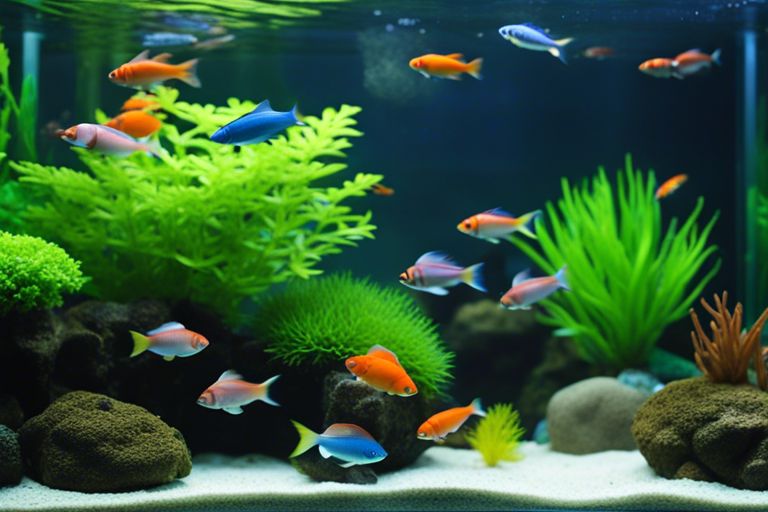
Regular Maintenance Practices
Water Changes and Conditioners
While aquariums are closed systems, they require regular water changes to remove accumulated waste and replenish vital nutrients. Any responsible aquarist should perform regular partial water changes to maintain optimal water quality. Additionally, the use of water conditioners is important to neutralize harmful chemicals like chlorine and chloramine, making tap water safe for aquatic life.
Testing and Monitoring Water Parameters
With the delicate balance of water parameters critical to the well-being of your aquatic pets, regular testing and monitoring are non-negotiable. Water testing kits are readily available and easy to use, allowing you to check levels of ammonia, nitrites, nitrates, pH, and other important parameters. Consistent monitoring enables you to detect any deviations early and take corrective action promptly.
Water parameters such as pH, temperature, ammonia, nitrite, nitrate, and hardness play crucial roles in the health and well-being of your aquarium inhabitants. Regularly monitoring these parameters ensures that your water quality remains stable, preventing potential issues like stress, disease, or even death among your fish and other aquatic species.
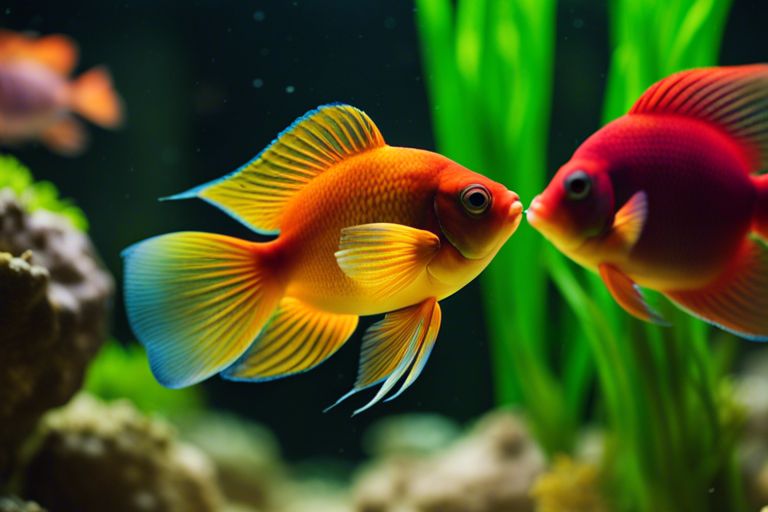
Adjusting and Stabilizing Water Conditions
Controlling Algae Growth and Nutrient Levels
Algae growth is a common issue in aquariums, and can be controlled by maintaining appropriate nutrient levels. Excessive nutrients, such as nitrates and phosphates, can fuel algae growth. Regular water changes, careful feeding practices, and the use of algae-eating fish or invertebrates can help keep algae in check. It is also important to ensure proper water flow and circulation in the tank to prevent stagnant areas where algae can thrive.
Temperature and Lighting Considerations
| Temperature | Lighting |
| Should be consistent and within the appropriate range for your specific fish and plants. | Ensure the right balance of light intensity and duration to prevent algae overgrowth and promote healthy plant growth. |
An aquarium’s temperature plays a crucial role in the overall health of its inhabitants. Fish and other aquatic species have specific temperature requirements, so it is necessary to monitor and maintain a steady temperature in the aquarium. Fluctuations in temperature can stress the fish and compromise their immune system, making them more susceptible to diseases. Similarly, lighting is vital for the growth of plants in the aquarium. The right balance of light intensity and duration is necessary to support photosynthesis and prevent algae overgrowth.
Nutrient Levels in Aquarium Water
| Nutrient | Effect |
| Nitrates | Can lead to algae blooms if levels are too high. |
| Phosphates | Also contribute to algae growth and should be kept in check. |
Dealing with Common Water Quality Issues
Identifying and Treating Diseases
Despite our best efforts, aquarium fish may still fall prey to various diseases. An early sign of illness is often a change in behavior, appetite, or physical appearance of the fish. It is vital to quarantine any sick fish to prevent the spread of disease to other tank inhabitants. Treatments may include medicated food, water additives, or specific medications tailored to the illness.
Managing Overfeeding and Waste
To maintain optimal water quality in your aquarium, it is crucial to manage overfeeding and waste. Excess food that is left uneaten can decompose, leading to a build-up of ammonia, nitrites, and nitrates. Regularly observe your fish during feeding time to ensure they consume all the food within a few minutes. A gravel vacuum can help remove any uneaten food and waste from the substrate during water changes.
Understanding the impact of overfeeding and waste on water quality is vital for the health of your aquarium inhabitants. It is not only unsightly but can also lead to an imbalance in the nitrogen cycle, causing stress and illness in fish. By practicing good feeding habits and proper waste management, you can create a healthy environment for your aquatic pets to thrive.
Summing up
Presently, maintaining optimal water parameters for a healthy aquarium is crucial for the well-being of your aquatic pets. By regularly testing and monitoring parameters such as pH, ammonia, nitrite, nitrate, and temperature, you can create a stable and balanced environment that promotes thriving fish and plant life. Remember to perform regular water changes, clean the tank and filtration system, and avoid overfeeding to prevent imbalances and fluctuations in water quality. By staying diligent and informed, you can ensure a vibrant and flourishing aquarium ecosystem for years to come.
FAQ
Q: Why is maintaining optimal water parameters important for a healthy aquarium?
A: Maintaining optimal water parameters is crucial for the health and well-being of your aquarium inhabitants. Fluctuations or imbalances in water parameters can stress or even harm your fish, plants, and other aquatic organisms.
Q: What are the key water parameters to monitor in an aquarium?
A: The key water parameters to monitor in an aquarium include temperature, pH levels, ammonia, nitrite, nitrate levels, and water hardness. These parameters play a vital role in the overall health of your aquatic environment.
Q: How often should water parameters be tested in an aquarium?
A: Water parameters should be tested regularly, ideally once a week or at least every two weeks. Testing frequency may vary based on the stability of your aquarium and the specific needs of your aquatic species.
Q: How can I maintain the temperature within the optimal range in my aquarium?
A: To maintain the temperature within the optimal range in your aquarium, use a reliable aquarium heater and a thermometer to monitor temperature fluctuations. Keep the aquarium away from direct sunlight and drafts that can affect water temperature.
Q: What can cause ammonia spikes in an aquarium, and how can they be prevented?
A: Ammonia spikes in an aquarium can be caused by overfeeding, decaying organic matter, or insufficient beneficial bacteria to break down ammonia. To prevent ammonia spikes, feed your fish sparingly, perform regular water changes, and ensure proper filtration and aeration.
Q: How do I adjust pH levels in my aquarium to maintain optimal conditions?
A: To adjust pH levels in your aquarium, you can use commercial pH adjusters or natural remedies such as driftwood or crushed coral. Gradually make changes to avoid sudden pH fluctuations that can stress your aquatic inhabitants.
Q: Why is controlling nitrate levels important, and how can I lower nitrate levels in my aquarium?
A: High nitrate levels can lead to algae growth and poor water quality in your aquarium. To lower nitrate levels, perform regular water changes, maintain a well-established biological filtration system, and avoid overstocking and overfeeding your aquarium.

